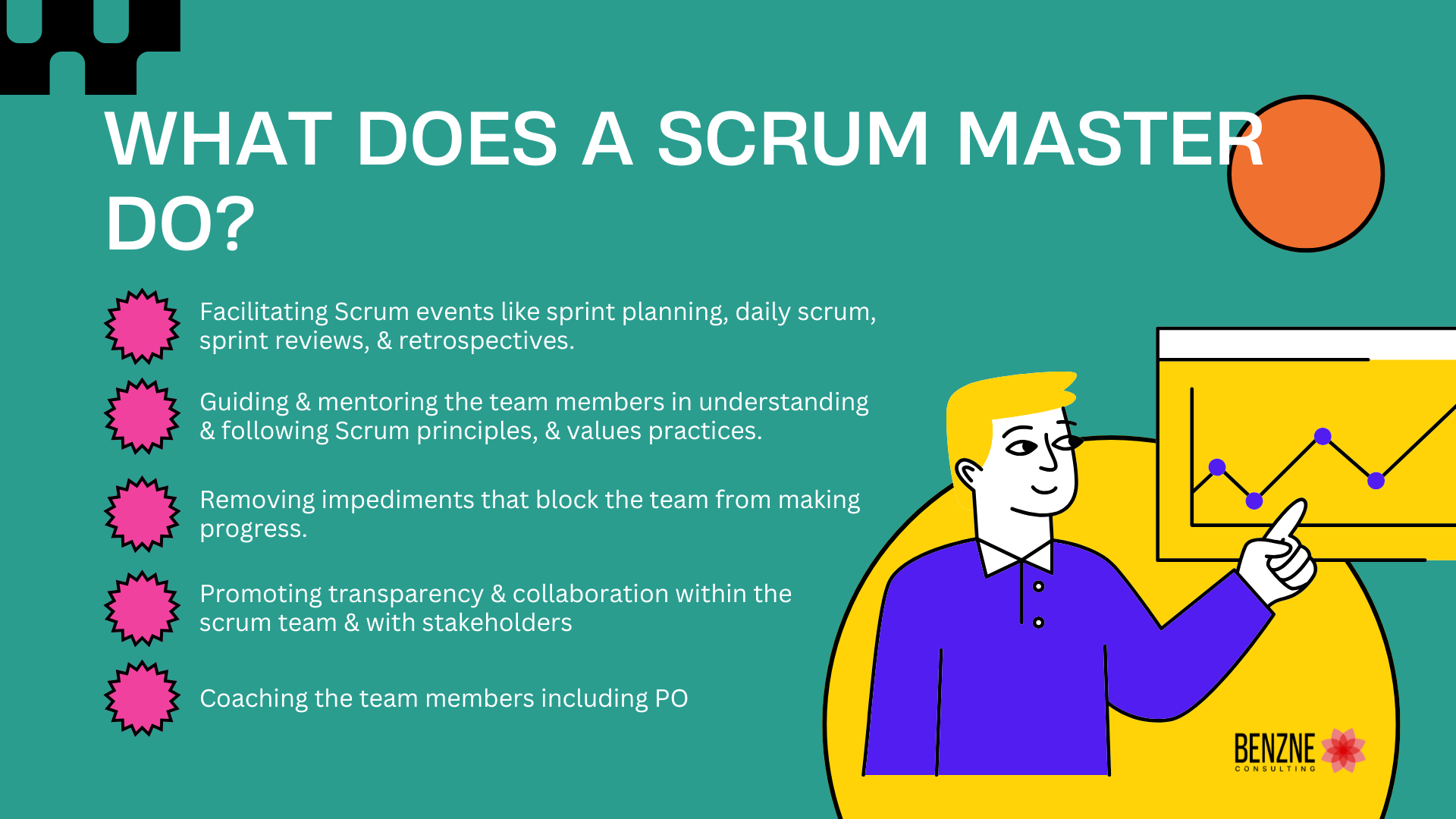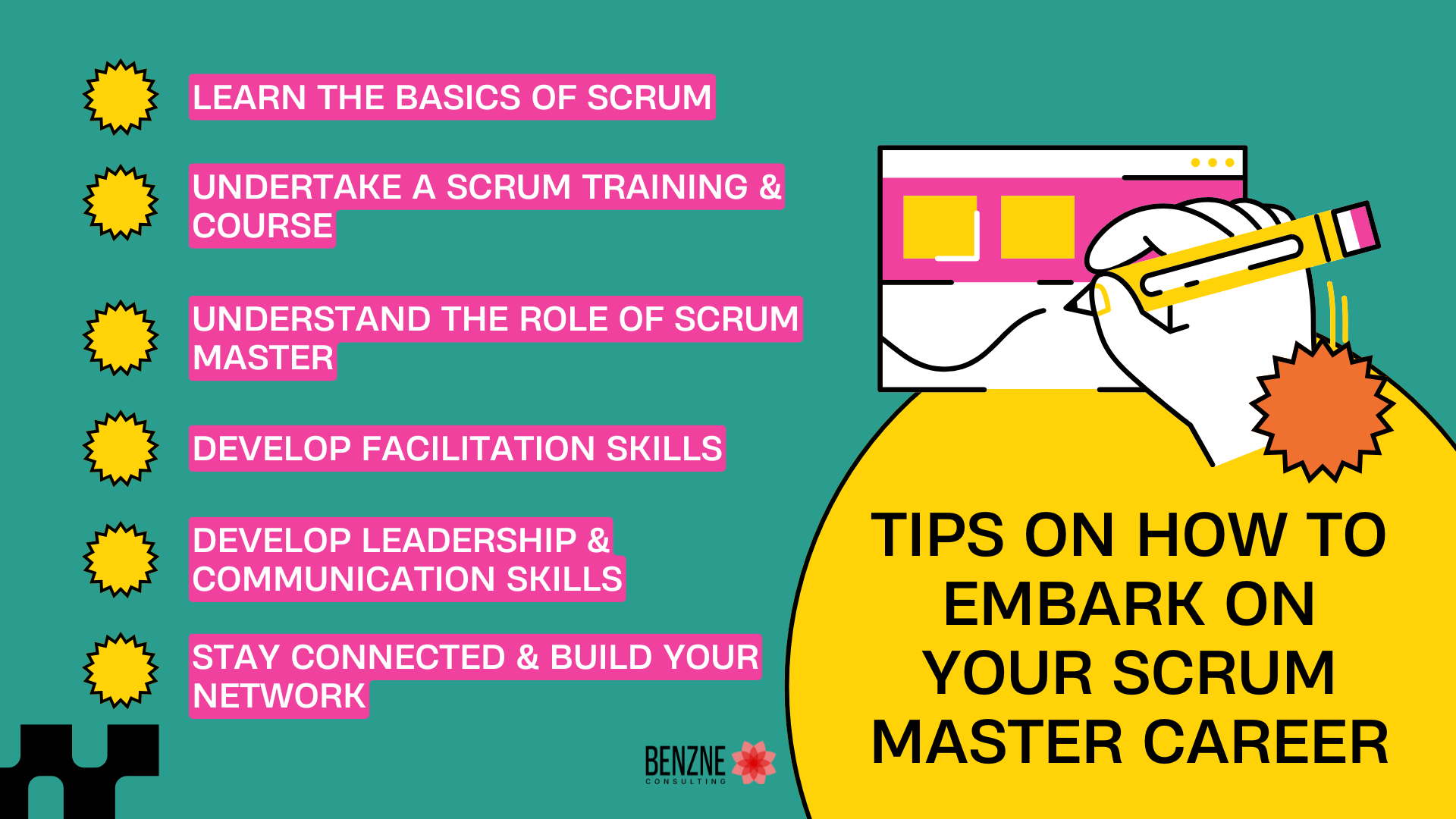Let’s first understand Scrum..
Scrum is one of the many frameworks used in Agile which helps the organizations and teams in delivering value to the customer by developing the product incrementally. Scrum as a framework follows timeboxed ceremonies which enable the teams to stay consistent and check that they are following all the aspects of product development which helps in smooth and efficient project delivery.
These ceremonies include Sprint planning – where the team plans the work which they would deliver in the next 1 to 4 weeks (depending on the size of sprint which may vary from 1 to 4 weeks), daily scrum meetings – here the teams meet daily for 15 mins and plan for the work to be done on that day and check on progress and how much work is remaining, mid sprint backlog refining – here the teams meet for not more than 1 hour where it breaks down and further define Product Backlog items into smaller, more precise items. This is an ongoing activity where the team adds details, such as a description, order, and size, ensuring continuity in work, sprint review – On the last day of the sprint, the scrum team gives demo of the working model developed during the sprint to the customer/ stakeholders to get their feedback and course change if that’s needed and retrospection – here the team reflects on the sprint they have just completed and understand what / how they could have worked and better and discuss how they can avoid things which slowed down the team’s outcome. All these ceremonies ensure
- Collaboration both within the team and with the customer (in sprint review)
- Adaptability through the feedback received in sprint review
- Transparency among team members and customers to achieve project goals
Commonly used in software development, Scrum is also applicable across industries to manage complex projects efficiently. Like in product development – similar to software development, teams use sprints to develop different features of a product and gather customer feedback, marketing teams follow Scrum to design and execute campaigns in iterative cycles, while testing different strategies and optimizing their approach based on real-time data, Scrum is also used by design teams which evolve their designs iteratively, gather feedback from stakeholders, and refine designs throughout the process. Scrum is also used in the healthcare industry in various departments like the admin department to streamline admission and discharge processes, to manage clinical trials, track progress and adapt the research flow. They may use scrum boards to track patient treatment plans, involving doctors, nurses and specialists in daily stand-ups to discuss progress.
To ensure that all these ceremonies take place as they should, there are certain roles defined in scrum like – Product owner, who is accountable for the backlog, ensures the right product is delivered to the customer by coordinating and collecting information from the customer, Scrum Master – who is responsible for governance of the process and safeguarding team members against burn out. He/ she also coaches the team members, while also reminding and helping them clarify about their roles and responsibilities. And Development Team – consisting of coders, testers, devops who are responsible for converting the requirements into working products.
Who Is a Scrum Master?
Scrum Master, who is a servant leader of the team, is responsible for ensuring that the team adheres to all the 12 scrum principles and practices and all 4 values are being followed. He/she acts as a facilitator for all the meetings, events and ceremonies, as a coach to the team regarding scrum principles, practices, and values, and as a mediator responsible for team dynamics and collaboration. He/she is also responsible to ensure the blockers and impediments are removed, helping the team to deliver value, ensuring the project runs smoothly and none of the team members is blocked to complete their tasks.
Scrum Master empowers teams to become self-organized and high-performing.
What Does a Scrum Master Do?
The Scrum Guide says the Scrum Master is responsible for “ensuring that all Scrum events take place and are positive, productive, and kept within the timebox.” The main responsibility of a scrum master is to enhance the outcome of the team developing the product/ project. He/she does so by –

- Facilitating Scrum events like sprint planning, daily scrum, sprint reviews, and retrospectives.
- Guiding and mentoring the team members in understanding and following Scrum principles, values practices.
- Removing impediments that block the team from making progress.
- Coaching the team members including Product owner and even stakeholders on agile principles and agile ways of working.
- Promoting transparency and collaboration within the scrum team and with stakeholders to ensure that the team understands the customer requirement without any ambiguity.
- Ensuring that there is continuous improvement in the team by analysing the progress and including training, and making sure the retro points have actionable items against them.
How to Become a Scrum Master?
How does one become Scrum master? We have been asked this a lot. The entire team’s dynamics rely on the way scrum master operates in a team. Becoming a scrum master requires one to possess certain skills which can be developed over time. Here are the skills I worked upon when I was aiming to become a scrum master.
- The first thing one needs to do when working as a scrum master is to facilitate all the events, ceremonies and events in a sprint. I learnt facilitating events like sprint planning, daily scrum meetings and retrospective meetings – using tools like Jira, Asana, Trello, etc. Since all the events and ceremonies are timeboxed, it is crucial to master the art of completing the events within the decided time to keep the meeting/ event productive and effective at the same time. Not only the events and ceremonies, I also learned facilitating other essential activities like conducting brainstorming sessions, hackathons etc.
- This facilitation as well as coordination with stakeholders require one to have great communication skills. Having good communication skills ensures that the message is easily and correctly understood without any ambiguity by all the participants of the meetings including stakeholders’ message to the development team and communication within the team. This helps deliver the right product as expected by the customer and good team morale. Strong communication also helps in resolving conflicts within the team, updating stakeholders with the progress and understanding the feedback. And also, coaching the team members when required.
- To be able to maintain focus and balance between conflicting priorities, time management and prioritization abilities came handy. It’s important to identify the highest priority impediments that need urgent resolution and move the other work with less priority to the following sprints.
- Problem Solving and critical thinking is another skill which I had to work on to be able to resolve conflicts amongst the team members and resolve impediments which would block the team’s progress.
- It is also important to have empathy and emotional intelligence so as to build trust within the team and address their dynamics effectively. Being empathetic also helps in understanding the stakeholder’s / customer’s perspective to be able to implement the feedback and deliver the product that best suits the customer’s requirements. This trail also helped me encourage open communication and collaboration within the team, which is crucial for a team’s success.
- Apart from these, building my knowledge about scrum played the most pivotal role in my journey of becoming a scrum master. I had understood that just by implementing ceremonies and sprinting would not guarantee that the team is agile. So I started deepening my knowledge about scrum, all the 12 principles and 4 values. To master this, I would always think whatever the team is doing, does that fall under the principles and values of agile. I started evaluating and ensuring that each activity and statement should adhere to these principles and values..
- Last but not the least, since the scrum master is supposed to coach and safeguard the team members I worked on my stance of coaching the team. Identifying and understanding the antipatterns the team members were following, and correcting the ones who needed to be corrected, on their roles and responsibilities. Giving clarity to all team members on their roles and responsibilities, and empowering them to take ownership of their work and working collectively as a team to reach the common goal. This also helps the teams to be able to handle situations and take decisions collectively that best suits the project’s requirements.
If you are serious about taking scrum master’s role but do not possess these skills yet or need to improve them, here are some tips on how you can build these skills and embark your scrum master career.Learn the basics of Scrum:

- Learn the Basics of scrum:
In my opinion, one should start by learning the basics of scrum, be thorough with all 12 principles and 4 values of Agile. Not just knowing the list of ceremonies in scrum but the significance of each. Understand the purpose and impact of each ceremony. What would happen if any of the ceremonies is not conducted or moved out of the predefined timeboxed time
- Undertake a Scrum training and Course:
Once you are through with the basic understanding of scrum, consider taking a course on scrum master like CSM (Certified Scrum Master) or PSM (Professional Scrum Master). This would help you deepen your understanding about the framework, the ceremonies, roles and various artifacts used in scrum. Plus give you credibility in the market and validate your expertise, which might be helpful in getting a SM role in an organization. Taking up a course will also help you think critically about Scrum’s functionality and how teams are able to deliver more value while following scrum
- Understand the Role of Scrum Master
Knowing what a scrum master does on a daily basis while he/ she delivers a project would grant a much deeper understanding of the role and give you the certainty whether or not you really wish to take up the role of a scrum master. As a scrum master you will be responsible for resolving the impediments/ blockers which the team needs to get fixed to move ahead in the project, coach and guide the team members on their roles and responsibilities. Facilitate all the meetings and ceremonies in scrum ensuring they are productive while solving the purpose
- Develop Leadership and Communication Skills:
Since the major part of Scrum Master’s role is to remove the blockers and gain clarity from the stakeholders and Product Owners, it’s important that you should develop leadership skills. Gain clarity on the subject, ask questions and understand the whats and hows of the project or the requests. Challenge the status quo and suggest better ways of working on a problem. Only if you have a deeper understanding on the subject, will you be able to ask the right questions. Along with this, focus on developing communication skills since there will be a lot of communication you would have to indulge in while removing blockers, talking to stakeholders, talking to team members, coaching and guiding them, facilitating the ceremonies and meetings
- Develop Facilitation Skills:
Since you will be facilitating all the ceremonies and meetings, you need to master the art of facilitating. Pick up each ceremony and practice facilitating each of them in minimum 4-5 ways. E.g Sprint Retrospective. Think about all the different techniques you can use to facilitate this ceremony. How can you do it in an online format and how can you do it in offline format? Which ways can you conduct a retro meeting like Sail boat, 4L’s, Starfish, Sad Mad Glad, and many other techniques. Likewise, think of facilitating other ceremonies like Daily Scrum. You can use Round-robin speaking order, sometimes discussion may start where each developer shares their updates, sometimes discussion may happen around the goal of the sprint, sometimes story-wise discussion may happen etc
- Stay Connected and build your network
It’s important that you stay curious and connect with other scrum masters working in other organizations. It’s a great option to talk to other scrum masters in your organization to understand their problem, and how they approach them and resolve issues in their teams. You can even talk to SMs in other organizations while connecting with them on various platforms like linkedin, discussion forums available online or even attending webinars from known enterprise agile transformation services organizations, where you can seek answers to your specific questions from the other participants and subject matter experts attending the webinar.
- Try to gain practical experience
Nothing can happen unless the theoretical knowledge is backed by practically doing it. Once you think you have theoretical understanding about the role, try to be a change agent in your organization and/or team. You can start noticing the anti patterns, suggest different ways of conducting each ceremony. Try solving problems and suggesting solutions to the team based on principles and values of Agile. Alongside, you may also show your interest in working in the projects where scum master is vacant.
How Long Does It Take To Become a Scrum Master?
If you are passionate about people, processes and are eager to develop systems which help any organization deliver value, you may have a natural bend towards becoming a Scrum Master. I am unable to comprehend how much time it takes to become a scrum master. To be honest, I am still learning to be a more effective scrum master myself. I follow all the suggestions mentioned above in my blog to try and become a better scrum master everyday. A pro tip here would be to make sure that as a scrum master, each suggestion you provide, any solution you think, should always come from at least one of the 12 principles and 4 values as mentioned in Agile Manifesto. Understanding and incorporating the principles and values of Agile is the key. Gaining theoretical knowledge and certification of Scrum and Agile, can definitely be a good starting point for you however, mastery of the role is an ongoing journey that requires continuous learning which comes with practicing agile and scrum.
How Does a Scrum Master Differ from a Project Manager?
While both the roles involve guiding teams, and maximizing the outcome of the team, their approaches, differ from each other:
| Scrum Master | Project Manager |
| Scrum master focuses on the scrum process ensuring the team follows scrum principles and facilitates the ceremonies. | Project manager focuses on the logistics of projects like scope, timelines, resource allocation, and budget. |
| Scrum Master Builds strong relationships between team members, fosters open communication, and encourages experimentation and learning. | Project Manager concentrates on achieving predefined project goals through planning, tracking of project timelines, milestones and schedules and managing the resources. |
| Scrum Masters teach scrum teams to prioritise tasks based on value and outcome. | Project Managers adhere strictly to predefined schedules.
|
| Scrum Master ensures that all Scrum events like sprint planning, daily scrum, sprint review, and Sprint Retrospective are organised, effective, and focused. They facilitate these meetings, encourage participation, and ensure that the team follows the Scrum framework. | Project managers are responsible for creating a detailed project plan that outlines the project scope, objectives, deliverables, timeline, budget, and resource requirements. |
| Scrum Masters ensure the sprint review meeting is scheduled and all the required attendees are a part of the meeting so that the can review the working model of the developed product and share their feedback. | They generate regular progress reports, communicate project status to stakeholders, and address any deviations from the plan. |
| Scrum Master works with Product Owner, Development team and Stakeholders to collect the information and ensure everyone is on the same page. | They collaborate with stakeholders to define project goals and establish a clear roadmap for execution. |
| Scrum Master is responsible for identifying and removing any obstacles or impediments that may hinder the development team’s progress. | Project Managers identify potential risks and develop strategies to mitigate them. They create risk management plans, monitor risk factors, and implement contingency measures to minimise project deviations..
|
| Scrum Master serves as a coach and a mentor for the Scrum Team, helping them understand and adopt Agile principles and practice. | Project managers lead and manage project teams, including assigning tasks, setting priorities, and monitoring progress |
| Scrum Master helps in facilitating effective backlog refinement, ensuring the user stories are well groomed and have all the details. | Project manager monitors project progress, tracks milestones, and evaluates performance against predefined metrics. |
| Scrum Masters foster a collaborative and self-organising environment within the team. | Project managers assign tasks, set priorities, and monitor progress. |
| Scrum Master works closely with the development team. Monitoring the team’s progress, tracking key metrics and providing visibility into the project’s status. | Project managers oversee the formal closure of projects, including finalising deliverables, obtaining client acceptance, conducting post-project reviews, and capturing lessons learned. |
| They ensure that the team’s work aligns with Sprint goals and that any deviations or risks are appropriately addressed and communicated.
|
They facilitate knowledge transfer and ensure project documentation and artefacts are properly archived. |
| Scrum Master shields the development team, ensuring they are able to focus on delivery. They safeguard the team from external disruptions and unnecessary demands, allowing them to concentrate on their work. | The project manager aims at ensuring the right balance in scope, time and resource for the delivery of the project. |
| Scrum master Tracks team metrics like Burn-down and burn-up charts, sprint velocity etc. | Project Manager monitors KPIS like budget variance, project status against predefined project milestones. |
| Uses tools like JIRA, Azure Devops for managing projects | Used tools like Excel, PowerBI, MS project for managing project timelines. |
How Does Benzne Consulting Train New Scrum Masters and Strengthen Agile Foundations?
At Benzne Enterprise agile consulting services, our team has a collective experience of coaching and training on agile ways of working for over 100+ years. During our engagements, we emphasize hands-on learning and practical application. Our training includes:
- Comprehensive workshops and training on Agile ways of working and Scrum fundamentals.
- Role-based coaching to develop practical skills which includes 1 on 1 meetings with each team member to bring the best out of them.
- Simulations of real-world practical challenges/ situations that help the team get hands-on experience of Agile while they deliver their projects.
- Mentoring and coaching by experienced Agile coaches to identify the true potential of each team member which will help them contribute to the maximum.
- Support the career progression of each team member by understanding what each member wishes to achieve and guiding them throughout the process.
Conclusion
A Scrum Master works as a coach, a mentor, a safeguard, impediment remover, making this role is pivotal for successful implementation of Agile in a team or an organization. One can succeed in this position by developing an agile mindset, developing the necessary skills like communication, facilitating, problem solving etc. and accumulating experiences while working in this position. Remember that the journey does not stop upon becoming a scrum master, in fact becoming a Scrum Master is just the beginning of the journey. Leadership, flexibility, and ongoing learning are essential for success in this fast-paced and in-demand role.
With this our blog on “Become a Scrum Master: A Complete Guide to the Role and Path Forward” comes to an end and we sincerely hope that the reading is worthwhile. Benzne Agile consulting experts would be glad to support you in your agile transformation journey. Please write to us at consult@benzne.com for any suggestions or feedback.
Frequently Asked Questions About How to Become a Scrum Master
What Industries Need Scrum Masters the Most?
The role of Scrum Masters is not industry specific. Any business, which focuses on delivering value to the customer by delivering the project faster while implementing the feedback can have this role of SM provided they follow agile ways of working. Initially, this role received a high demand in industries like software development and IT but now other industries like healthcare, finance, marketing, and education, that are adopting Agile practices, also need Scrum Masters where Agile practices drive innovation and efficiency.
What Are the Most Common Mistakes New Scrum Masters Make?
There are various mistakes which new New Scrum Masters commit, but most common of them all are:
- Becoming the bottleneck of the team by becoming the SPOC for all communications to and from other teams.
- Typing to solve all the impediments on their own. Sometimes it’s best to facilitate a meeting to help the teams resolve conflicts and remove blockers.
- Not maintaining their team’s boards in JIRA on a real time basis and working to fix/ update them later.
- While facilitating a meeting, not focusing on having a meaningful outcome thus wasting the time of all participants
- Taking status updates instead of planning for the day in daily scrum.
- Not safeguarding the development team and overcommitting leading to burnout of team members.
- Focusing too much on governance and process implementations rather than outcome of the team.
- Due to repetition of the same ceremonies every sprint, omitting retrospective meetings and neglecting its importance in continuous improvement.
- Neglecting the engagement of stakeholders.
Who Can Become a Scrum Master?
If you are someone who has a natural bend towards people, process and mentoring, scrum master’s role can come very handy. Along with that, if you work on developing all the skills mentioned above in the blog, you can become a scrum master. Along with that, if one has an interest in Agile ways of working, and team facilitation can also look for becoming a Scrum Master. A background in project management or software development might turn out to be helpful but it is not mandatory.
Can a Fresher Become a Scrum Master?
Yes, freshers can definitely become Scrum Master with adequate knowledge of Agile and Scrum. Along with that earning certification, and showcasing relevant soft skills like communication and problem-solving. If one has a natural bend towards people, process, mentoring and conflict resolution, he/she might be a great fit for scrum master’s role.
Can a Non-Technical Person Become a Scrum Master?
Absolutely! Scrum Masters need not have a technical background and non technical folks can become scrum master. Their primary role is to facilitate Agile practices, ensure the teams abide by the Agile principles and values and improve team dynamics, which relies on soft skills rather than technical expertise. But having said that, if someone has prior experience in project management or understanding of software development, that can be of added advantage to him/her. Also, in some organizations, the decisions need to be made quickly while in a meeting. So, if the scrum master has technical background, that can be of added advantage to the team as well as the organization.

